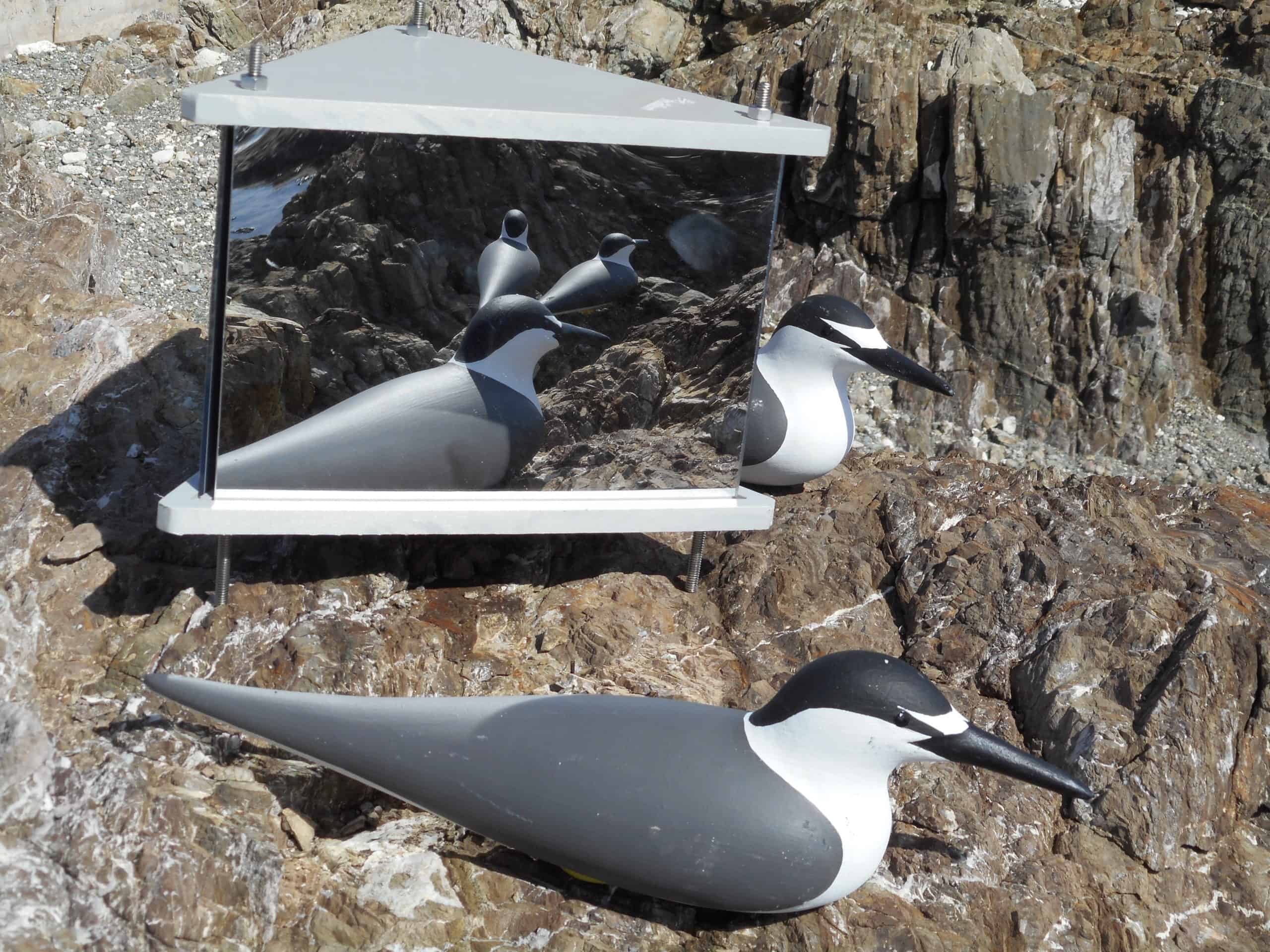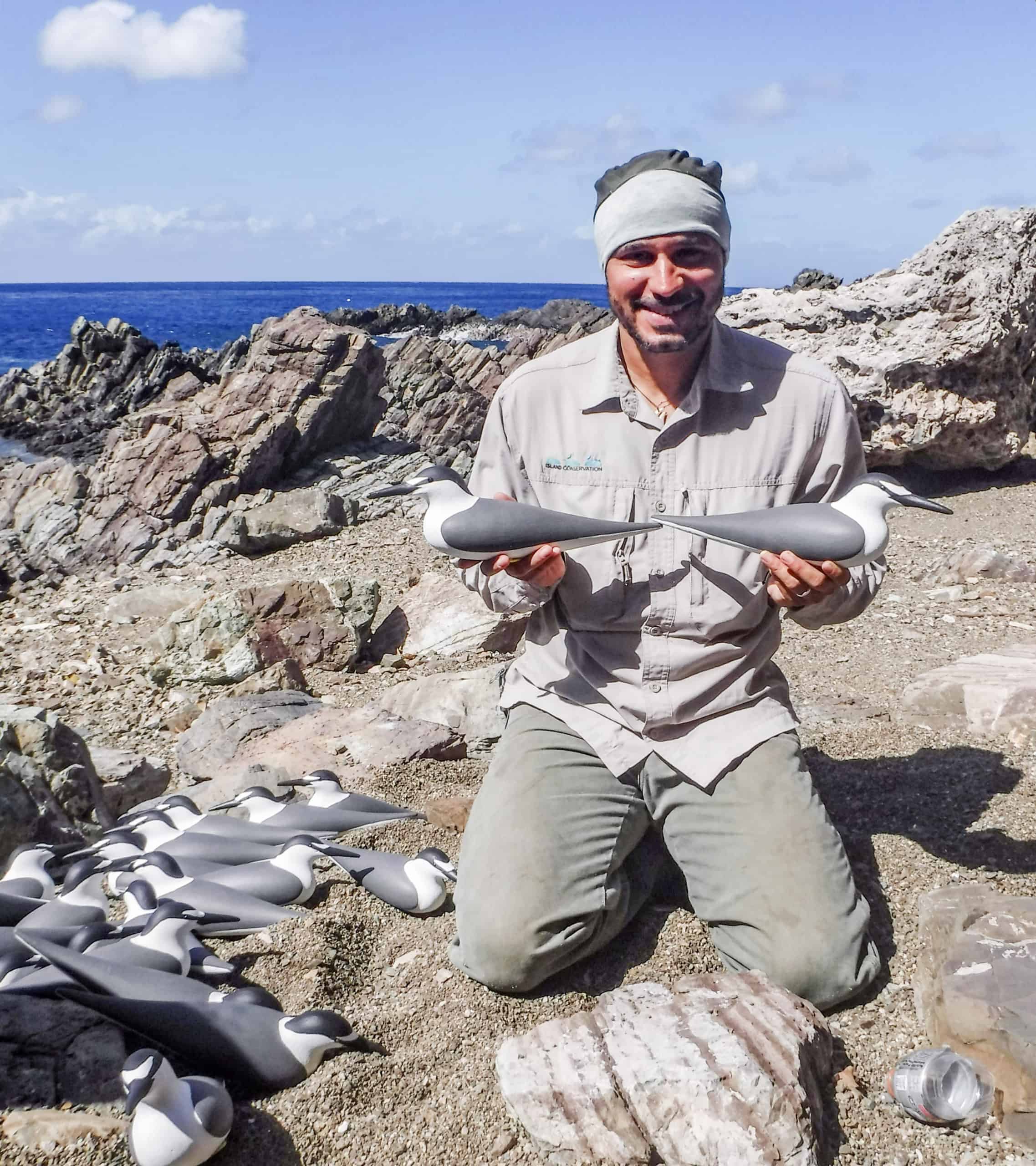Share this article
Wild Cam: Repopulating a lost Caribbean colony
Desecheo is a tiny islet—a little more than half a square mile—off the west coast of the Puerto Rican mainland. The rocky island is partly forested, though it often looks barren from a distance. Most of its shorelines are covered in inaccessible rocks, and no archaeological evidence has been found indicating the island was ever inhabited before Europeans arrived in the area about half a millennium ago. Desecheo is not the ideal beach vacation destination. But Jose-Luis Herrera-Giraldo and his colleagues have the difficult task of attracting thousands of seasonal visitors to this small rocky jutting, and they’re using some high tech tricks to pull it off.
The island used to be home to huge numbers of migrating seabird species like brown noddies (Anous stolidus), brown boobies (Sula leucogaster), red-footed bobbies (Sula sula) and bridled terns (Onychoprion anaethetus).
“Desecheo was once one of the largest bird colonies in the Caribbean region,” said Herrera-Giraldo, a project manager and biologist at Island Conservation, an international nonprofit organization that aims to prevent extinctions on islands by removing invasive species.
Enlarge

Credit: Jose Luis Herrera/Island Conservation
But invasive mammals like black rats (Rattus rattus) and feral goats (Capra aegagrus hircus) were introduced to the island over the years, and a population of rhesus macaques (Macaca mulatta) were even introduced to study their ecology and social behavior. These invasive species were all responsible for eating or otherwise destroying eggs, disturbing nesting birds and preying on young chicks. For more than a decade in the mid-20th century, the U.S. Air Force also used the island for survival training. The effects, particularly from the invasive species, were devastating—five of seven species that used to breed there historically were extirpated from Desecheo.
The island was designated a U.S. National Wildlife Refuge in 1976, and in the1970s, the U.S. Fish and Wildlife Service began trying to eradicate the invasive mammal species. After years of work, they announced the island was free of invasive mammals in 2017.
Insert audio file. Caption: The sounds of an Audubon’s shearwater. Credit: Jose Luis Herrera/Island Conservation
The U.S Fish and Wildlife Service, Island Conservation and Effective Environmental Restoration Inc., a nongovernmental organization in Puerto Rico, then began trying to repopulate Desecheo with some of the seabirds that had disappeared. Following some of the efforts used elsewhere with seabirds in places like the Pacific Coast of the U.S., the team turned to bird decoys and speakers playing seabird sounds.
As described in a study published recently in Ecological Solutions and Evidence, they built the decoys out of PVC plastic that looked like brown noddies and bridled terns, and played sounds of nesting birds on the speakers at strategic places around Desecheo during both day and night. To bolster the appearance of an optimal, crowded nesting island, Herrera-Giraldo and his colleagues also placed mirrors near the decoys.
Enlarge

Jose Luis Herrera/Island Conservation
“The use of mirrors is important when you don’t have the funds to create a colony of decoys,” he said.
To start, they focused on the sounds of brown noddies and a species of conservation concern, Audubon’s shearwaters (Puffinus lherminieri), which wasn’t known to nest on the island historically but have been documented in the open waters nearby Desecheo and in the neighboring island of Mona. They played the noddy sounds during the days when those birds were more active and the shearwaters at night when latter may be passing over the island on their southward migrations and during the breeding season.
“They worked super well. Basically, the first year, in 2018, we started having good results for the bridled terns and for the Audubon’s shearwaters,” Herrera-Giraldo said.
Enlarge

Credit: Jose Luis Herrera/Island Conservation
But that year, a huge storm came through destroying some of the decoys, mirrors and sound systems. Only one decoy was left standing. But they were in luck — they still managed to attract some bridled terns to the colony.
“Only one decoy survived, and that decoy made it work,” Herrera-Giraldo said.
Enlarge

Credit: Jose Luis Herrera/Island Conservation
Using trail cameras, the researchers documented nesting activity—including on a part of the island that that previously had no known nests. “They responded super quickly to the intervention,” Herrera-Giraldo said.
Enlarge

Credit: Jose Luis Herrera/Island Conservation
The Audubon’s shearwaters also responded well to the social attraction tools. For the first time, the researchers documented an Audubon’s shearwater roosting on the island right in the hollow of one of their speakers in 2018 using trail cameras. The following year, they detected a pair on the island, but with no sign of nest, near the same speaker.
The team didn’t attract any brown noddies yet, but they are still optimistic about their results so far, as attracting nesting birds would normally take years without the use of these tools. They did observe noddies flying over the island, though.
“We think it’s a matter of time to have this species nesting on the island,” Herrera-Giraldo said.
Enlarge

Credit: Jose Luis Herrera/Island Conservation
The researchers put their work on pause in 2020 due to the COVID-19 pandemic, but Herrera-Giraldo, pictured above, and researchers plan to go back this summer to monitor seabird activity on the island.
“Since Desecheo was historically a large seabird nesting area, I think having no invasive mammals and no major threats to seabird populations on the island is a great conservation achievement,” Herrera-Giraldo said. “Now the island is open for birds.”
Enlarge

Credit: Jose Luis Herrera/Island Conservation
If the colony can be reestablished, Herrera-Giraldo said the techniques they used could be repeated in other areas that were once home to large numbers of seabirds in the Caribbean. He’s also optimistic that Desecheo has a rather high elevation, making it less vulnerable to climate change caused sea level rise in the future.
This photo essay is part of an occasional series from The Wildlife Society featuring photos and video images of wildlife taken with camera traps and other equipment. Check out other entries in the series here. If you’re working on an interesting camera trap research project or one that has a series of good photos you’d like to share, email Josh at jlearn@wildlife.org.
Header Image: Bridled terns on Desecheo Island. Credit: Jose Luis Herrera/Island Conservation








